What are the types of shafts? How to design a shaft part?
1. What is a shaft?
A shaft is basically a rotating part of any machine with a circular cross-section that is used to transfer power from one part to another or from a power generator to a power absorber. To transmit power, one end of the shaft is connected to the power source and the other end is connected to the machine. Shafts can be solid or hollow as needed, and hollow shafts help reduce weight and provide advantages.
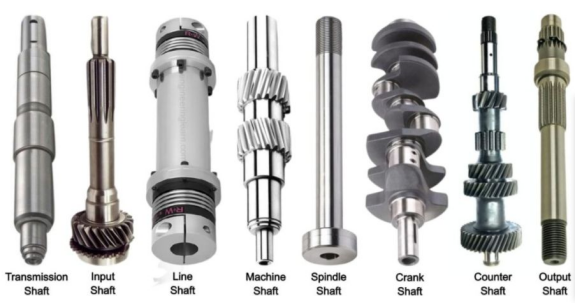
The shaft is one of the most important components used in the machine. They are used to support rotating parts, such as pulleys and gears, which are supported by bearings located in a rigid machine housing, and gears and belts located on the shaft that help transmit motion.
Many other rotating elements are mounted on the shaft by keys. They are subjected to bending moments and torques due to the reaction forces and the torque generated by the power transmission of the members supported by the shaft.
The shaft always has a circular cross-section and can be hollow or solid. Shafts can be classified as crank shafts, straight shafts, articulated shafts, or flexible shafts, but straight shafts are usually used to transmit power.
Shafts are usually designed as steep cylindrical rods, so they have different diameters throughout their length, although shafts with constant diameters are easy to produce.
The amount of stress in the step shaft varies with its length. Shafts with uniform diameters are not suitable for disassembly, assembly, maintenance, and these shafts create complexity when fastening parts mounted on them, especially bearings.
2. Type of shaft
01 Drive shaft
A drive shaft is a stepped shaft used to transfer power between one source to another machine that absorbs power. Mounted on a stepped part of a shaft gear, hub or pulley for conveying motion. Such as elevated shafts, bobbins, auxiliary shafts and all factory shafts.
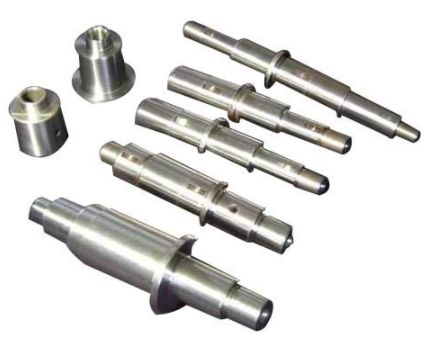
02 Mechanical shaft
The mechanical shaft is located inside the assembly and is an integral part of the machine, such as the crankshaft in the automobile engine is the machine shaft.
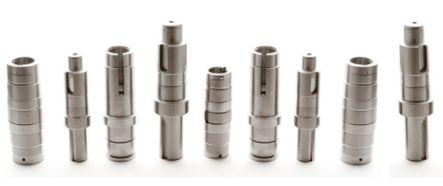
03 axle axle
Axle shafts support rotating elements, such as wheels, which can be mounted in housing with bearings, but shafts are non-rotating elements and are mainly used in vehicles, such as axles in cars.
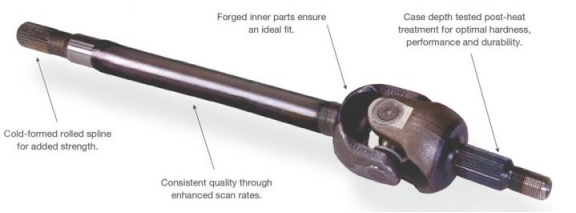
04 Main axis
The spindle is the rotating part of the machine that houses the tool or work space for the short axis of the machine, such as the spindle in a lathe.
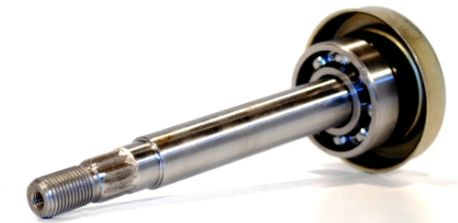
3. Material for shaft
Shafts are usually made of low carbon steel. If high strength is required, alloy steels such as nickel-chromium, nickel, chromium-vanadium steels are used. They are formed by hot rolling and cold drawing and grinding, and the material usually used for conventional shafts is 50C12, 50C4, 45C8, 40C8 grade carbon steel.
The material used for the shaft shall have the following characteristics:
The material should have high strength
The material should have high wear resistance
The material should have heat treatment characteristics
The material should have good mechanical properties
The material must have a low notch sensitivity factor
4. Standard size of shaft
The mechanical shaft is up to 25 mm and the step size is 0.5 mm.
Standard size of drive shaft - Step size:
25 mm to 60 mm -5 mm step size
60 mm to 100 mm -10 mm step size
110 mm to 140 mm -15 mm step length
140 mm to 500 mm -20 mm step size
The standard size of the machine shaft is up to 25 mm and the step size is 5 mm. For shafts, the standard lengths are 5m, 6m and 7m, but generally 1m to 2m.
5. Stress in the shaft
The stress caused in the shaft is:
Shear stress due to torque transmission
Bending stress due to the forces acting on mechanical elements such as belts and gears and the self-weight of the shaft, which is compressive or tensile in nature
Combined stress caused by bending and torsional loads
The maximum allowable shear stress of the design stress is:
The shaft is 56000KN/m2 with a spare keyway
The shaft is 42000KN/m2 without keyway allowance
The maximum allowable bending stress is:
The shaft is 112000KN/m2 with a spare keyway
The shaft is 84000 KN/m2 without keyway allowance
6. Manufacturing of shafts
The shaft is manufactured by hot rolling process. Compared to hot rolling, the strength of the shaft is higher during cold rolling, but cold rolling causes high residual stress, which causes the shaft to deform during machining. The forging process is used to make shafts with larger diameters.
After the completion of rolling, the end of the shaft is processed, one end of the shaft is installed on the inspection, and the other end of the shaft is supported by the turret of the lathe. In order to finish the shaft, the tool fixes the tool holder, and when the power is turned on, the chuck starts rotating the shaft.
The dial gauge is used to check the concentricity of the shaft before machining, and perform various operations such as turning, end facing, grooving, taper turning according to the purpose. High volume, CNC and other applications are best suited for final processing. Machining can also be done with a CNC double-ended machine with a shaft sandwiched between the tool rotation and the fixture.
In order to achieve concentricity and roundness, the rotating tools should be opposite each other at the center line. Drive shafts and motors are usually manufactured using this process.
7. Shaft drive
We know that axes are used for power transmission, so the formula used to calculate power transmission is: P = 2πnT/ 60. Where P is the transmitted power (W); n is revolutions per minute (RPM); T is torque in Nm.
Shaft speeds for various applications:
Machinery: 100~200
Woodworking machinery: 250~700
Textile industry: 300~800
Light machinery workshop: 150~300
Subaxis: 200~600
8. Shaft design
Shafts can be designed in two different processes according to different loads:
01 Strength based shaft design Drive shafts are generally susceptible to bending moments, torsional forces, axial forces and their combinations. Generally, bearings are subjected to a combination of torsional and bending stresses.
Bearing tensile stress: tensile stress =P/A. Where A= (π/4) x D2, D is the diameter of the axis in mm.
Bearing bending moment: bending stress = (MbxY)/ I. Where, Mb= bending moment; Y=D/2, where D is the diameter; I = moment of inertia = (πxD4)/ 64
Bearing torque: torsional stress =Mt x R/J. Where Mt= torsional moment; R=D/ 2, where D is the diameter; J= polar moment of inertia = (πxD4)/ 32
02 Shaft design based on rigidity
If the shaft does not twist too much, the drive shaft is called rigid on the basis of torsional stiffness.
{Mt/J} = {(G x ө)/ L}. Where, Mt= torque mm in N; J= polar moment of inertia =(πxD4)/32; D= diameter of axis (mm); ө= torsion Angle; G= stiffness modulus N/mm2
9. Advantages and disadvantages of axes
Advantages of axis:
They're less likely to get stuck
They require less maintenance than chain systems
They have high torsional strength
They have very high polar moment of inertia values
They are very robust and less likely to break down
Hollow shafts are hollow in their internal shape, so they require less material
For the same torque transmission value, the hollow shaft is lighter than the solid shaft
They have a very high radius of rotation
Disadvantages of axis:
They have power losses due to loose coupling
They vibrate as they spin
They produce a constant noise
High manufacturing and maintenance costs
Difficult to manufacture
Changing the speed of the shaft is not easy
Long downtime due to mechanical problems
Oil drips from the elevated shaft
Using an elastic coupling (such as a plate spring coupling) results in a loss of speed between the shafts
If the shaft fails, it takes a lot of time to repair





